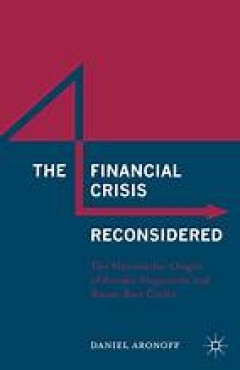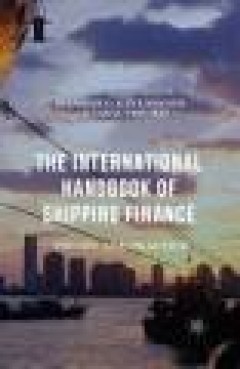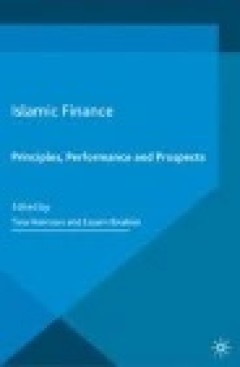Filter by

Response-ability in the era of AIDS Building social capital in community car…
The aim of this book is to disseminate the results of research, and to inform, inspire and create a platform for debate between practitioners, academics, researchers, trainers and facilitators interested in addressing community needs in terms of HIV/AIDS and support.
- Edition
- -
- ISBN/ISSN
- 9781920383268
- Collation
- -
- Series Title
- -
- Call Number
- -

The Rise of Mass Advertising Law, Enchantment, and the Cultural Boundaries o…
This book is a first cultural legal history of advertising in Britain, tracing the rise of mass advertising circa 1840–1914 and its legal shaping. The emergence of this new system disrupted the perceived foundations of modernity. The idea that culture was organized by identifiable fields of knowledge, experience, and authority came under strain as advertisers claimed to share values with the …
- Edition
- -
- ISBN/ISSN
- 9780192858917
- Collation
- -
- Series Title
- -
- Call Number
- -

Global Agricultural Workers from the 17th to the 21st Century
Agricultural workers have long been underrepresented in labour history. This volume aims to change this by bringing together a collection of studies on the largest group of the global work force. The contributions cover the period from the early modern to the present – a period when the emergence and consolidation of capitalism has transformed rural areas all over the globe. Three questions h…
- Edition
- -
- ISBN/ISSN
- 9789004529427
- Collation
- -
- Series Title
- -
- Call Number
- -

The Financial Crisis Reconsidered
In The Financial Crisis Reconsidered, Aronoff challenges the conventional view that reckless credit produced the US housing boom and the financial crisis, explaining how the large current account deficit, and its mercantilist origin, was a more fundamental cause. He also demonstrates that the decision to provide relief for bank creditors rather than underwater homeowners was responsible for the…
- Edition
- 1
- ISBN/ISSN
- 978-1-137-54789-7
- Collation
- XVII, 291
- Series Title
- -
- Call Number
- -

The European Banking Union
Why did European policy-makers introduce the Banking Union? Which are its main features? How does it affect banks and their customers? This book tries to answer these questions, by providing a clear description of the building blocks of the banking union, and by discussing the issues that still remain unanswered.
- Edition
- 1
- ISBN/ISSN
- 978-1-137-56314-9
- Collation
- XIII, 136, 8 b/w illustrations
- Series Title
- Palgrave Macmillan Studies in Banking and Financial Institutions
- Call Number
- -

The International Handbook of Shipping Finance
Edited by two leading academics in this area, and with contributions from 25 prominent market practitioners and academics over 16 chapters, this Handbook covers shipping finance and banking, maritime financial management and investments. As such, it includes: shipping markets; asset backed finance; shipbuilding finance; debt finance; public and private equity and debt markets; structured financ…
- Edition
- 1
- ISBN/ISSN
- 978-1-137-46546-7
- Collation
- XLII, 430, 20 b/w illustrations, 86 illustrations in colour
- Series Title
- The International Handbook of Shipping Finance
- Call Number
- -

Valuing Banks A New Corporate Finance Approach
This book aims to overcome the limitations the variations in bank-specifics impose by providing a bank-specific valuation theoretical framework and a new asset-side model. The book includes also a constructive comparison of equity and asset side methods. The authors present a novel framework entitled, the “Asset Mark-down Model”. This method incorporates an Adjusted Present Value model, whi…
- Edition
- -
- ISBN/ISSN
- 978-1-137-56142-8
- Collation
- 19 b/w illustrations
- Series Title
- -
- Call Number
- -

The European Banking Union
Why did European policy-makers introduce the Banking Union? Which are its main features? How does it affect banks and their customers? This book tries to answer these questions, by providing a clear description of the building blocks of the banking union, and by discussing the issues that still remain unanswered.
- Edition
- -
- ISBN/ISSN
- 978-1-137-56314-9
- Collation
- XIII, 136
- Series Title
- Palgrave Macmillan Studies in Banking and Financial Institutions
- Call Number
- -

Stagnation Versus Growth in Europe: Capitalism in the 21st Century
This book explores the debate on the policies required to overcome the crises of 2008 and 2011, in which the focus on short-term measures has overshadowed the need to analyze the low growth rate in the European Union, and especially the Eurozone, as the basis for interventions that will counteract the tendency toward stagnation. Factors that lie at the root of the low growth are examined in dep…
- Edition
- -
- ISBN/ISSN
- -
- Collation
- -
- Series Title
- -
- Call Number
- -

Islamic Finance: Principles, Performance and Prospects
This book demonstrates how the global market for Islamic financial services has shown strong growth in recent years and shown remarkable resilience during the global financial crisis. Drawing on a range of international perspectives from the Gulf Cooperation Council countries, Malaysia, Pakistan, Australia and Europe, this book explores the characteristics and performance of Islamic finance and…
- Edition
- -
- ISBN/ISSN
- 978-3-319-30918-7
- Collation
- -
- Series Title
- -
- Call Number
- -
 Computer Science, Information & General Works
Computer Science, Information & General Works  Philosophy & Psychology
Philosophy & Psychology  Religion
Religion  Social Sciences
Social Sciences  Language
Language  Pure Science
Pure Science  Applied Sciences
Applied Sciences  Art & Recreation
Art & Recreation  Literature
Literature  History & Geography
History & Geography